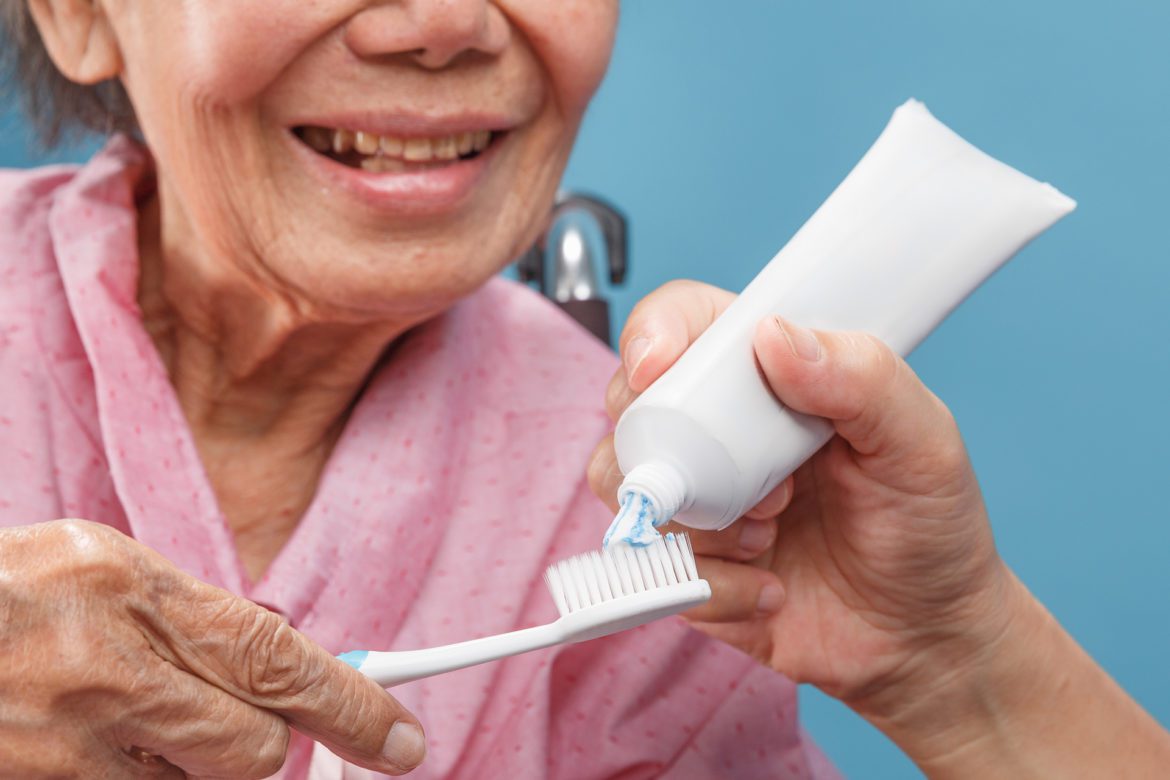Oral health is an integral part of everyone’s overall health. However, daily management of good oral hygiene is not always easy or possible for everyone. Children, as well as older and the disabled, often are not capable of good dental hygiene. In these instances, caregivers are vital in maintaining oral and overall health.
Parents who model excellent oral healthcare for their children often have children with excellent oral health. Let your children see you brushing and flossing. Let them know that you are enthused about going to the dentist for your regular checkups. Show your children how to brush and floss, and go with them to their dental visits to learn more about your role as their primary oral health caregiver—model to them how satisfying it is to have clean, healthy teeth and gums.
Older and disabled patients often need caregivers. Caregivers may monitor or assist the patient with their daily oral hygiene based on the patient’s needs. It is vital that the caregiver who assists in daily oral hygiene also attend the patient’s dental visits. During the dental visits, the dentist or dental hygienist will point out areas of concern, instruct the caregiver in the proper delivery of oral care, and suggest the best tools for accomplishing healthy goals.
Toothbrush selection is significant. There are many options to choose from: electric or manual, small or large head, long or short handle, thin or fat handle, hard or soft bristles, etc. Here are some guidelines when choosing a toothbrush. Studies have shown that people better clean with an electric toothbrush. Many different electric toothbrushes are available, and some are better than others. For individuals who cannot tolerate the vibration of the electric toothbrush, a manual brush is needed. Always use soft bristles and choose a comfortable handle length (small hands short handle, adult hands regular length handle, arthritic hands fat handle with always a smaller head brush, so it is easy to maneuver in the mouth). Ask your dentist or dental hygienist for their recommendation based on the patient’s and caregiver’s needs.
Caregivers should oversee or assist in brushing fluoride toothpaste at least twice daily and flossing (or interdental brush) at least once daily. The morning brush should be after eating, and the evening brush should be just before bed. This timing is critical to remove food and sugars from the teeth, especially before bed. The less time food and sugar reside on the teeth. The less likely the patient is to have decay and gum disease.
When it comes to cleaning between teeth with string floss, water flosser, or interdental brushes, the caregiver, in consultation with the dentist or dental hygienist, has to decide what can be accomplished. If the patient can do a thorough job cleaning between their teeth, with some caregiver oversite, this would be ideal. However, if the patient cannot perform this task, the caregiver can clean using regular floss or a floss holder. If floss is not possible, interdental brushes dipped in toothpaste are an excellent way to clean between teeth and deliver some fluoride. Water flossers may be difficult and messy for patients needing a caregiver.
Oral caregiving is an essential part of overall healthcare for children, elderly adults, and patients with disabilities. The caregiver needs to learn the proper techniques and tools for caregiving. The dentist and dental hygienist can show you how to accomplish this and discuss the tools required.
Thank you to all of our dedicated caregivers..

